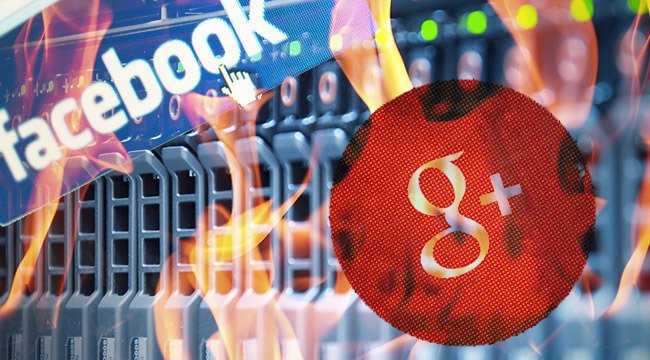
Most people under the age of thirty-five reminisce about social networks the way their parents giggle about half-forgotten TV shows. MySpace and Friendster, once Hollywood gets around to making nostalgic teen comedies set in the dot-com era, will be easy punchlines. It’s not hard to see Twitter, Snapchat, and Whatsapp suffering the same fate eventually. But what does it say about us (and the way we communicate), that we can build social networks so quickly and just as quickly abandon them?
Probably the biggest failure, to the extent anyone remembers it or still uses it, is Google Plus. Back in 2011, Google started firing shots at Facebook, offering a tool to download all your information in a zip file and switch networks. And I admit, I was a big booster. I thought Google’s muscle, paired with Facebook’s utter contempt for its users, was going to bring FB down. So what the heck happened?
In retrospect, the writing should have been on the wall. Google Plus is, however accidentally, an illustration of one of the key pitfalls of social media. It’s a concept driven by a corporate board, not one that grows organically out of how people communicate.
Ironically, you probably use Google Plus every day. Google Plus is really Google’s global login; if you use GMail, you technically use Google Plus, and the photo tools that Google created are incredibly useful. Google Plus had, fundamentally, a good idea: Social networks weren’t particularly social, and the Google team wanted to make it easier to share your entire life with others. Photos, tweets, emails, and thoughts in a never-ending, relentless stream that Google could study, index and build a better search algorithm out of. The problem is, well, people didn’t really want to do that, exactly.
With Google, the fundamental problem is always that Google designs products for Googlers first and human beings second. Google Glass is a superb illustration of this. but even its own employees were forced to admit the same problem was true with the social aspects of Google Plus. One of the stranger additions the site made when it was fighting Facebook was a photo livestream so you could (and this was a real example) see photos of the party you were at uploaded in real time. While socially awkward nerds probably loved it, most people at parties are, uh, at the party.
As a result, Google Plus, despite months of hype and years of attempts to make it better than Facebook (which it often was) recognized that nobody cared and they ultimately just split Google Plus into Streams and Photos. Most people view it as a cautionary tale, but they take away the wrong lessons from it.
The fundamental root of any joke about Facebook, whether it’s a jab at oversharing parents or satire of the paranoid yet sincere memes from your aunt, is that we are too close to other people on social media. Far from alienating us as some people claim, it’s telling us far more than we ever wanted to know about everybody.
Google Plus was essentially Facebook, but more efficient. Everything you did and said was neatly filed and arranged, easily searchable, easily accessible. That sounds great, until you started getting added to events because you mentioned a topic once, or found a month-old status popping out among total strangers who wanted to throw a hissy fit about your opinions.
Google Plus’ biggest sin was that it expanded upon what it thought we wanted without realizing that our relationship with Facebook (and social media) fits the textbook definition of love/hate.
To be sure, social media has a use, and a powerful one. We can stay in contact with people we don’t often see but want to keep in our lives. But by the same token, it’s also teaching us things about our social mores and what we share and don’t share with others that we’ve never had to consider before. Facebook managed to squeak in under this thorny social problem; other social networks, and even Facebook itself, in the end, may not be so lucky.
[“Source-uproxx”]